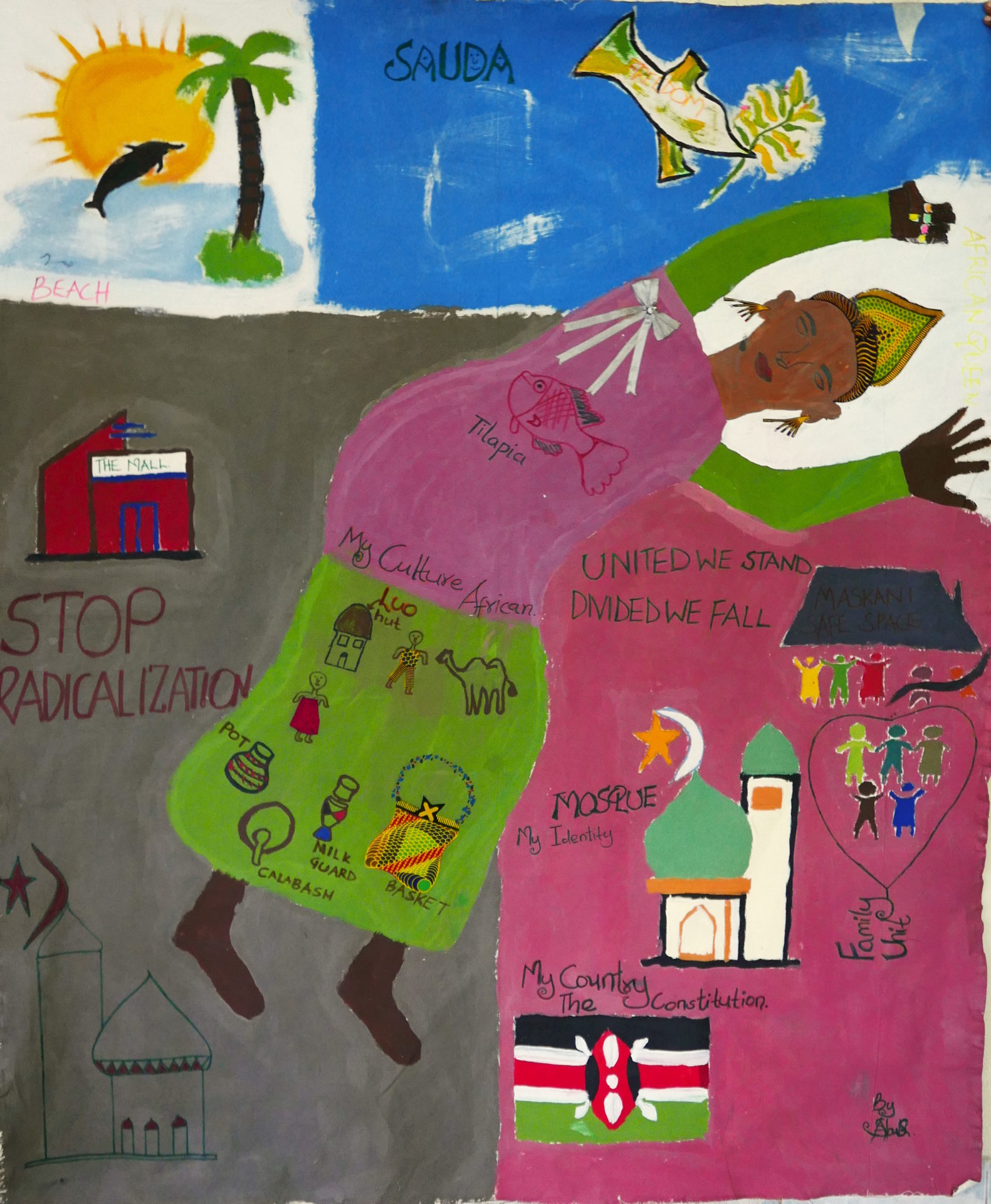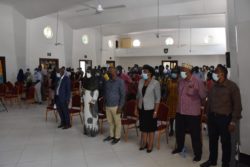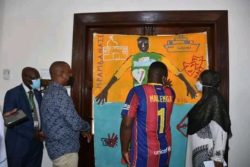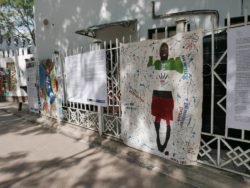British Academy Funded Exhibition on ‘Gender and violent extremism’ held in Kenya

- Date
- Wednesday 27 October 2021
A collaborative research project funded by the British Academy involving the University of Leeds, Technical University of Mombasa (TUM), Art2Be, Kenya and Coventry University held a ground-breaking exhibition of body mapping. The exhibition was launched at the Assembly Hall, Technical University of Mombasa, Kenya on 27 October 2021 and was attended by Kenyan political leaders, representatives of civic society organisations and citizens.
The exhibition comes as a celebration of a two-year project conducted by Dr Sahla Aroussi, as principal investigator (University of Leeds), in collaboration with Dr Michaelina Jakala (Coventry University, United Kingdom), Dr Fathima Azmiya Badurdeen (Technical University of Mombasa, Kenya) and Xavier Verhoest (Art2Be, Kenya). The research explored how violent extremism is understood, experienced, and resisted at a local community level focusing on individual and everyday experiences. Because violent extremism has been defined so far using a state centric and donor led understanding of this phenomenon (Aroussi 2020), the research sought to understand this concept from a bottom-up perspective rooted in individual, personal and community-based experiences.
Body mapping is a form of embodied storytelling. Body mapping as an art-based method allows participants to reflect on their experiences and feelings physically through the body, visually through the arts, verbally through storytelling and relationally through their connections with other participants and the researcher. As a visual method, body mapping has a transformative potential that enables communities and the wider public to rethink, challenge and transform violent practices.





The findings from this study highlighted that in thinking about violent extremism, it is important to understand not only what is counted but also what is left out. While the Kenyan government and the international community in Kenya are invested in policies and programmes aimed at countering violent extremism from groups such as Al-Shabaab and the ‘Islamic State’, this study revealed that violent extremism meant different things to the participants. At a local community level, violent extremism is understood to include police brutality, ethnically motivated violence, gang violence, marginalisation, discrimination, and gender-based violence. In the light of these findings, the research argues that the Kenyan government’s exclusive focus on tackling violence from Al-Shabaab and on Islamist extremist ideology is counterproductive leading to further stigmatisation of already marginalised Muslim minorities. Therefore, the concept and policies on violent extremism need to be interrogated using a bottom up and community led approach that can bring back to the centre the experiences of violence and exclusion that communities face in their everyday.
The exhibition was organised as part of the knowledge translation phase of the research. The event was launched with a research panel on “Gender and violent extremism: Untold stories of everyday resistance to violent extremism in Kenya,” and was followed by a three-day public exhibition displaying participants’ body maps (27-31 October 2021).
The Vice Chancellor of Technical University of Mombasa, Prof. Laila Abubakar opened the event with the guest of honour the Deputy Governor of Mombasa County, Dr. William Kingi, in attendance. Other guests who were present during the event were law enforcement officials from Mombasa County, Village Chiefs, Village Elders, District Peace Committee members, media personnel, local artists, academics, local researchers, civil society actors/NGOs, and students.
Dr. Kingi, Deputy Governor of Mombasa County, hailed the exhibition and commented:
‘Social Science researchers at the Technical University of Mombasa are now interrogating body mapping as a tool for preventing and countering violent extremism. I was particularly impressed by the exhibitors who have invested a great load of thought into the body mapping artwork that we saw today.’
In the panel Dr. Fathima Azmiya Badurdeen (TUM) presented the key findings of the research project, Mr. Xavier Verhorst, the artist, and curator (Art2Be) presented the techniques of body maps to the audience and Dr. Sahla Aroussi (University of Leeds) gave an overall view of the project. Participants in the project attended to talk about their experiences: ‘I was so excited to see my body map exhibited at the Technical University of Mombasa. I have memories of the body map process during the workshop. Today, I see it again and I feel nice to see that it gives a meaning to not only myself but to others.’ Hadija, Workshop participant, Mombasa.
The event was graced with music by local artists, who were young men and women who were reformed members of specific violence issues in the community. Ummukultum a female youth leader said:
‘This is my first time to see art in research work. It is beautiful and meaningful. I think people in the coast should engage more in this type of art as body maps for research to address community issues.’
More than 200 participants attended the panel event and the launch of the exhibition. A volunteer team of 14 students from the Conflict and Security Programme at TUM assisted the event coordination.
